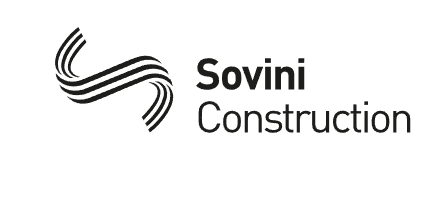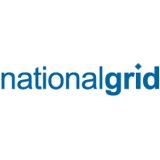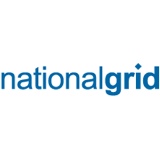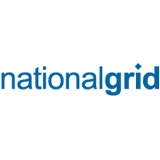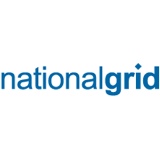Title Page
-
Project
-
Client
-
Document Reference
-
Conducted on
-
Prepared by
SECTION 1: HEALTH AND WELFARE
-
Topic inspection 1: Occupational Health and Welfare
Welfare Inspection (CDM Schedule 2 - Checklist)
-
Welfare Inspection (CDM Schedule 2)
-
Sanitary Conveniences
-
Are there suitable & sufficient sanitary conveniences at readily accessible places?
-
Adequately ventilated and lit? (so far as is reasonably practicable)<br>
-
Rooms and conveniences kept clean & orderly?
-
Separate rooms containing conveniences for men & women?
-
Washing Facilities
-
Suitable & sufficient washing facilities, including showers if required and are they readily accessible?
-
Are they in the immediate vicinity of every sanitary convenience?
-
Are they supplied with clean hot and cold or warm water?
-
Do they include soap or other suitable means of cleaning?
-
Do they include towels or other suitable means of drying?
-
Are the rooms containing washing facilities sufficiently ventilated and lit?
-
Are washing facilities/rooms kept in a clean and an orderly condition?
-
Separate washing facilities for men/women? (Unless room is for 1 person at a time and door can be secured from inside.)
-
Is the facility for washing hands, forearms & the face only? (Separate facilities then not needed)
-
Drinking Water
-
Is an adequate supply of wholesome drinking water provided or made available at readily accessible and suitable places?
-
Is every supply of drinking water conspicuously marked by an appropriate sign? (where necessary, for H&S reasons)
-
Are there a sufficient number of suitable cups or other drinking vessels available? (unless from a jet of water)
-
Changing rooms and lockers
-
Are there suitable and sufficient changing rooms for workers who have to wear special clothing for the purposes of their work and can’t change elsewhere?
-
Are these separate rooms for men/women or for separate use by men/women? (where necessary)
-
Are changing rooms provided with seating?
-
Do these rooms include facilities to enable a person to dry special clothing and his own clothing and personal effects? (where necessary)
-
Are there suitable & sufficient facilities (where necessary) provided or made available at readily accessible places to enable persons to lock away - special clothing, not taken home; their own clothing, not worn during working hours; their personal effects?
-
Facilities for Rest
-
Are suitable & sufficient rest rooms/rest areas provided or made available?
-
Are there suitable arrangements to protect non-smokers?
-
Are the rooms/areas equipped with an adequate number of tables & seating with backs for the number of persons at work likely to use them at any one time?
-
Where necessary, are there suitable facilities for any person at work who is a pregnant woman or nursing mother to rest lying down?
-
Do these rooms/areas Include suitable arrangements to ensure meals can be prepared and eaten?
-
Do these rooms/areas Include the means for boiling water?
-
Are these rooms/areas maintained at an appropriate temperature?
First Aid
-
First Aid
-
Are there adequate and appropriate first aid provisions on site, including an appointed first aider/emergency first-aider?
-
Is the first aid notice complete and displayed
-
Are all employees aware of the first-aid provision on site?
-
Has a first aid risk assessment been completed, identifying the provisions required?
-
Are sufficient first-aid boxes readily available and are the locations of the first-aid boxes clearly indicated?
-
Is there a first aid appointed person and are there a suitable number of trained and certified first aiders on site?
Personal Protective Equipment
-
Personal Protective Equipment
-
Have all employees been trained in the proper use and care of personal protective equipment?
-
Is all personal protective equipment supplied to employees free of charge?
-
Do arrangements exist for personal protective equipment to be maintained as necessary?
-
Is foul weather clothing provided for those who are expected to work in cold/wet conditions?
-
Is personal protective equipment only used as a means of last resort, when all other control measures have been found to be impracticable?
-
Is adequate storage available for PPE as may be necessary?
-
Does all PPE carry a ‘CE’ mark indicating that it has been manufactured to an acceptable standard?
COSHH
-
COSHH
-
Have COSHH assessments been carried out on all substances that have been identified as hazardous to health?
-
Is there a COSHH register on site?
-
Are the COSHH product data sheets held on site?
-
Is there an effective system for the receipt, storage, issue, use and disposal of all hazardous substances?
-
Does and effective system exist to obtain material safety data sheets from suppliers for hazardous substances used on site?
-
Have necessary controls and precautions been identified and put into place e.g. can the material or process be substituted or contained and, if not, is the correct PPE provided and used?
-
Are COSHH assessments (including those received form subcontractors) readily available to the user of the substance?
-
Have all staffed been trained to understand and implement the requirements of COSHH assessments?
-
Are the methods of working detailed in the COSHH assessments adhered to?
-
Are COSHH assessments reviewed on a regular basis?
-
As a result of reviews, are COSHH assessments revised when necessary?
-
Are precautions in place for persons not directly involved to be protected against the effects of substances hazardous to health?
Asbestos
-
Asbestos
-
Is there an asbestos management plan held on site ?
-
Is there a refurbishment & demolition (R&D) asbestos survey held on site?
-
Does the R&D survey cover all relevant areas i.e. where works are being undertaken or are planned to be undertaken?
-
Is there an asbestos register on site?
-
Have operatives undertaken asbestos awareness training?
-
Is the workforce aware of the correct actions to take if it is suspected that asbestos had been discovered or disturbed?
-
Is the existence of asbestos highlighted in the site induction?
-
Are barriers and signs sited to isolate areas within which asbestos is or may be present?
-
Are measures in place to prevent the accidental damage/disturbance to known asbestos?
-
Is asbestos removal being undertaken on site at the time of the audit, or has previously been undertaken as part of the project?
-
Are suitable arrangements in place for asbestos removal e.g. work carried out by licensed asbestos removal contractor?
-
Will a ‘site clearance certificate’ be obtained before reoccupation of areas within which asbestos has been removed or made safe?
-
Are there suitable arrangements in place to record asbestos removed and update CPP/HS File and Asbestos Register?
Dust
-
Dust
-
Dust and Fumes
-
Are any present dust / fume issues being suitably controlled?
-
Are appropriate dust suppression techniques used to minimise air pollution from timber sawing or planning, stone or block cutting, crushing etc?
-
Is dust on site haul roads and material stockpiles damped down adequately on dry/windy days?
-
Are haul roads located away from sensitive areas such as rivers and ditches?
-
Are site vehicle speed limits controlled to reduce dust?
-
Are public roads regularly cleaned using a road sweeper or vacuum?
-
Do vehicles that remove granular or dusty materials have sheeted covers?
-
Are all plant and vehicles in good working order with an up-to-date maintenance or service log?
-
Are enclosed chutes/covered skips used for lowering dusty demolition or waste materials?
-
Is cement/concrete being mixed in enclosed areas to prevent dust?
-
Are material stockpiles or spoil heaps stored away from sensitive areas such as drains/rivers, ditches etc?
-
Does the CPP include systems to deal with dust and fumes?
-
Are operatives trained in the use of Respiratory systems?
-
Occupational Asthma
-
Are all at-risk staff informed of the possible sources of occupational asthma within their working environment?
-
Are all at-risk staff informed of the actions to take to avoid occupational asthma?
-
Are all at-risk staff advised of the early symptoms of occupational asthma?
-
Are all at-risk staff advised that occupational asthma could potentially end their working lives?
-
Is health surveillance provided for the individuals and groups who are identified as being particularly at risk via COSHH assessments?
Noise
-
Noise
-
Has an assessment been carried out to identify noise hazards on site and the workers exposure to the noise?
-
Have any practical efforts been taken to eliminate or reduce noise levels i.e. change equipment, location etc?
-
Are suitable hearing protectors available on site for those who need them?
-
Have site staff been provided with adequate information, instruction and training regarding the risks, control measures and protection from noise?
-
Have hearing protection zones been set up where required?
-
Are hearing protection zones clearly defined and signed?
-
Are suitable hearing protectors issued to and worn by everyone working in a hearing protection zone?
-
Is the wearing of hearing protection strictly enforced as and when necessary?
-
Are any persons not involved in the activity kept away from the noisy area, where possible?
Vibration
-
Vibration
-
Have risk assessments been carried out to determine the risks to workers from the use of vibrating equipment?#
-
Are procedures in place to ensure that workers are not exposed to excessive daily levels of vibration, HAVS register in place?
-
Where possible, is low-vibration equipment, or other vibration-reducing technology being used?
-
Are vibrating tools and equipment regularly maintained?
-
Have measures been taken to minimise the use of vibrating tools and equipment by using alternative methods or techniques?
-
If tools or equipment are used for longer than the recommended times, is health surveillance provided?
-
Have workers been trained in safe working practises for vibrating tools and equipment?
-
Are workers allowed to rotate jobs to reduce exposure to vibration?
-
Is personal protective equipment provided, such as suitable gloves to keep hands warm?
-
Are workers given health advice about the cause and symptoms of vibration-related illness they might experience?
Manual Handling
-
Manual Handling
-
Do all manual handling activities have suitable RAMS?
-
Has appropriate PPE been issued and worn by operatives carrying out manual handling?
-
Is there evidence that operatives have read and understand these?
-
Have operatives been trained in manual handling?
Lead
-
Lead
-
Is there a suitable risk assessment in place for activities involving lead?
-
Does the company carry out work likely to result in significant exposure to lead-based paint residue?
-
Are site staff aware of the potential dangers of working with lead and the safe system of work to avoid exposure?
SECTION 2: GENERAL SAFETY
-
Topic Inspection 2: General Safety
Site Organisation
-
Site Organisation
-
Is the site secure from unauthorised access at all times?
-
Has a safe means of access to, and egress from, the place of work been provided?
-
Are all pedestrian walkways clearly marked and signed, particularly emergency escape routes?
-
Have traffic routes been designed to segregate vehicles and pedestrians?
-
Is the site entrance adequately and clearly signed?
-
Are pedestrian walkways wide enough to allow the passage of people and materials?
-
Is the site entrance adequately and clearly signed?
-
Where there is access to work at height, have adequate precautions been taken to prevent falls?
-
Can vehicles turn where necessary rather than reversing?
Fire Prevention and Control
-
Fire Prevention and Control
-
Is there an up to date fire risk assessment in place on site?
-
Does the construction phase plan identify a responsible person for fire risk management
-
Is there a site fire management plan in place with emergency arrangements and site plan(s) prepared showing suitable escape routes and fire points?
-
Is there a system to ensure that suitable and sufficient fire detection equipment and fire extinguishers are available at all work locations, and that they are regularly maintained?
-
Are all emergency routes and exits clearly indicated by statutory signs and lighting?
-
Are fire marshal contact details included on the site notice board?
-
Does the evacuation procedure form part of the site induction?
-
Are there suitable arrangements in place to manage hot-works?
-
Are externally stored combustible materials and bins kept away from buildings?
-
Where possible, has compartmentation been achieved at the earliest stage? (Fire door installations, fire stopping etc.)
-
Where final materials cannot be used early in the construction process, have suitable temporary arrangements been made in order to reduce the spread of fire?
Electrical Safety
-
Electrical Safety
-
Is electrical equipment being used, managed and stored in a suitable and compliant manner?
-
Is the supply on site maximum of 110V?
-
Is all portable electrical equipment subjected to periodic PAT testing?
-
Are step-down transformers provided for site use?
-
Are RCD’s used on existing mains voltage?
-
Is there a cable management policy on site?
-
Are cables and leads protected from damage?
-
Has the site electrical distribution system been installed and certified by professional electrician?
-
Where portable mains-powered tools have been used, are portable residual current devices used?
-
Are all mains-powered circuits, such as the site office supply protected by a residual current device which is regularly tested?
-
Where festoon lighting is used, have all bulbs been fitted with guards?
-
Are there safe systems in place for isolation of electrical systems? (Lock-out, Tag-out etc.)
Plant and Equipment
-
Plant and Equipment
-
Is there any plant on site?
-
Are the statutory inspection records available for the equipment?
-
Are sub-contractors RAMS checked for inclusion of PUWER?
-
Are drivers and workers using the plant and equipment trained, competent and authorised?
-
Are operating keys kept secure to prevent unauthorised use?
-
Is the equipment suitable for the job?
-
Are suitable instructions on the use and daily maintenance of equipment available?
SECTION 3: HIGH RISK ACTIVITIES
-
Topic Inspection 3: High Risk
Mobile Plant and Vehicles
-
Mobile Plant and Vehicles
-
Can site transport enter or leave the site without being a hazard to other road users and pedestrians?
-
Is all reversing of site transport carried out under the control of a trained signaller?
-
Are there suitable physical barriers in place for pedestrian routes?
Work at Height - HSE Topic Inspection Pack
-
Work at Height
-
Identification
-
Has the duty holder carried out a risk assessment and identified work at height activities and appropriate precautions? (IN)
-
Fragile Surfaces
-
Work is being carried out on or near to fragile surfaces and guardrails, coverings or other suitable precautions have not been provided? (PN)
-
Are warning signs fixed at the approach to fragile roofs when access is needed or foreseeable e.g. cleaning valley gutters? (IN)
-
Equipment
-
Work at height has been carried out and there is no precautions against falling and there is a risk of a person falling a distance liable to cause injury? e.g. work at a roof edge, not justified use of a ladder or kick stool. (PN)
-
Evidence indicates work at or near open edges will be done where a person could fall a distance liable to cause personal injury? e.g. at a mezzanine floor/storage area above an office. There are no precautions against falling from an edge. (IN)
-
Stairs
-
Provided with robust handrails? (IN)
-
Tower Scaffold
-
Are tower scaffolds free from defects and faults and set up as per manufacturers guidance? (PN)
-
Mobile Elevated Work Platform
-
Has suitable segregation been provided below the working area? (PN)
-
Are ground conditions suitable and has risk of overturning or collapse been considered? (PN)
-
Has suitable fall protection equipment been provided? (PN)
-
Have any unsafe practices been observed? e.g. climbing on mid-rails, leaning over edge protection (PN)
-
Has the MEWP been subject to thorough examination in the last 6 months? (IN)
-
Harnesses and Lanyards
-
Where lanyards are in use and there is visual evidence of significant defects or damage (PN)
-
Scaffolding is being erected, altered and dismantled with safety harnesses in use? (PN)
-
In there a regime in place to ensure harnesses and lanyards are subject to thorough inspection? (IN)
-
Ladders
-
Are portable ladders free from defects and damage?
-
Has consideration been given to ensure use of ladders is justified as the most reasonably practicable access equipment?
-
FASET Netting
-
Is netting installed as per the manufacturers guidance?
-
Are nets free from damage and defects?
-
Are any repairs clearly identifiable and tagged with the date of repair?
Lifting Operations
-
Lifting Operations
-
Is there a lift plan and a method statement for the operation that has been briefed to all personnel involved in the lift?
-
Has a competent person been appointed to plan, and supervise each lift?
-
Is there evidence that all lifting equipment and accessories have been subject to thorough examinations within the required timeframe? (LOLER 1998)
-
Is the safe working load for lifting equipment prominently displayed?
-
Is the weight of transported loads known and easily identifiable in the lift plan?
-
Has a suitable and sufficient risk assessment been carried out that considers all aspects of the lifting operation including the location of obstructions etc?
-
Is there effective communication between all those involved in the lift?
-
Have suitable barriers and signage been erected to create an exclusion zone around the lifting area?
-
Are there any goods hoists present on site?
Temporary Works
-
Temporary Works
-
Are there any temporary works present on site?
-
Please tick all applicable temporary works present on site
-
Falsework
-
Façade Retention
-
Scaffolding
-
Crane Supports
-
Formwork
-
Trench Support
-
Is there a temporary Works Coordinator (and Supervisor) appointed?
-
Is there a temporary works procedure in place?
-
Has the Temporary Works register been completed and available for review?
-
Are all items of temporary works items contained within the register?
-
Is the register complete and up to date?
-
Is there evidence to show that all required inspections are being undertaken?
-
Is there a suitable "permit to load" in place?
-
Have Temporary Works been installed in line with the TW design?
Scaffolding
-
Scaffolding
-
Is all scaffolding inspected by a competent person at least once during any period of 7 days and the results entered in a register?
-
Is there a scaffold design available and has the scaffold been constructed in line with the design?
-
Is there a minimum standard of competency that is required for the erection/use of towers (such as PASMA)?
-
Does the CPP have a policy on management of scaffolding?
-
Is the scaffolding hand over certificate and design drawings held on site?
-
Are pull test certificates available for review?
Excavations
-
Excavations
-
Is a system in place for ensuring that the statutory inspections of excavations are carried out and recorded?
-
Are there clearly marked physical barriers to prevent people falling into excavations?
-
Are stacked materials, spoil or plant stored safely, and a safe distance from the edge of the excavation?
-
Are properly secured stop blocks provided to prevent vehicles which are tipping material from into the excavation?
-
Are there suitable measures in place to support the excavation and prevent collapse?
-
Are spoil heaps located suitable distance from the excavation?
Services - Underground and Overhead
-
Services - Underground and Overhead
-
Have all underground utilities been located and their routes marked?
-
Have permits to dig or enter been issued where necessary?
-
Where it has not been possible to isolate overhead power lines, are other safety management systems in place to prevent danger?
-
Have the works on the public highway and any traffic control measures and lighting been approved by the local authority?
-
Is calibrated cable location equipment available on site and staff who are trained to use it?
-
Have suitable goalposts been erected to warn of the height of overhead power lines?
Confined Spaces
-
Confined Spaces
-
Has a suitable risk assessment been carried out for work in the confined space?
-
Is a permit to work system in place for work in the combined space?
-
Is there competent persons available to carry out any confined space work?
-
Are provisions available for gas monitoring and Breathing Apparatus?
-
Are all services that could affect the health or safety of those in the confined space locked off and isolated?
-
Are arrangements in place for venting the confined space prior to entry?
Dangerous Substances
-
Dangerous Substances
-
Does the CPP contain arrangements with regards to working with dangerous substances?
-
Are all dangerous substances stored in a suitable area and is this highlighted on the emergency plans?
-
Has a suitable fire risk assessment been done with relation to this area?
-
Are suitable warnings notices in place?
-
Is there a requirement for a DSEAR Assessment?
-
Has a DSEAR assessment been completed?
-
Has a zoning plan been implimented?
-
Is there suitable signage in place to identify zones?
-
Are electrical devices used on site ATEX certified?
Frame Erection
-
Frame Erection
-
Does the CPP contain a policy on frame erection?
-
Is the frame erection managed under Temporary Works?
-
Do the operatives know sequence of erection?
-
Are the RAMS held on site?
-
Are emergency rescue procedures in place, have they been rehearsed?
Demolition
-
Demolition
-
Is there a suitable demolition plan in place?
-
Has a competent person been appointed to oversee demolition operations?
-
Is there evidence that the structural stability has been correctly assessed?
-
Where required has the scaffolding been netted, monoflexed or hoarded off?
-
Is there evidence to show that all services have been disconnected?
-
Is the demolition area and surround vicinity suitably sectioned off?
-
Is there adequate dust suppression where required?
-
Is there adequate dust suppression where required?
-
Is there adequate dust suppression where required?
Other
-
Are there any additional risks that have not been covered in the previous sections?
-
Please provide detail of additional hazards and risks
-
Risk level
Summary of Findings
-
Summary of Findings
Sign off
-
Auditor
-
Site Representative
